Pathology Lab Procedures: Tissue Preparation and Staining
VerifiedAdded on 2020/05/11
|5
|763
|126
Report
AI Summary
This report provides an overview of histopathology lab procedures, with a focus on the steps involved in preparing tissue samples for microscopic examination. The report details the key stages of tissue preparation, including fixation to preserve cells, grossing which involves careful examination and dissection, processing to prepare samples for automated instruments, embedding in a supporting medium, sectioning using a microtome, and staining to make the specimens visible under a microscope. The report also mentions specific practices at the RMIT pathology lab, such as the use of formaldehyde as a fixative and the thickness of sections cut. Furthermore, it provides examples of specific staining techniques used to diagnose conditions like viral hepatitis and cirrhosis. The document highlights the importance of each step in ensuring accurate diagnosis through microscopic analysis.
1 out of 5
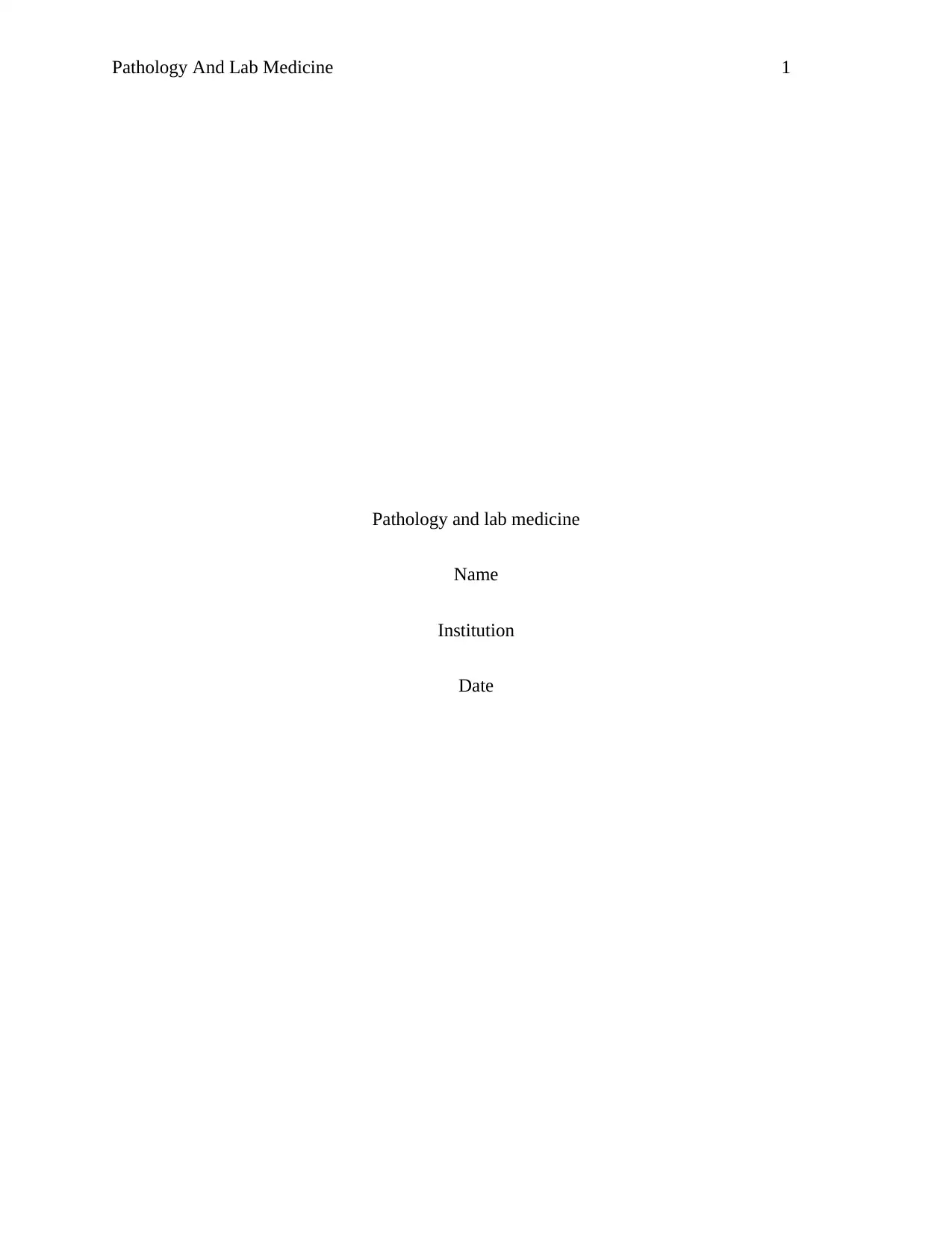
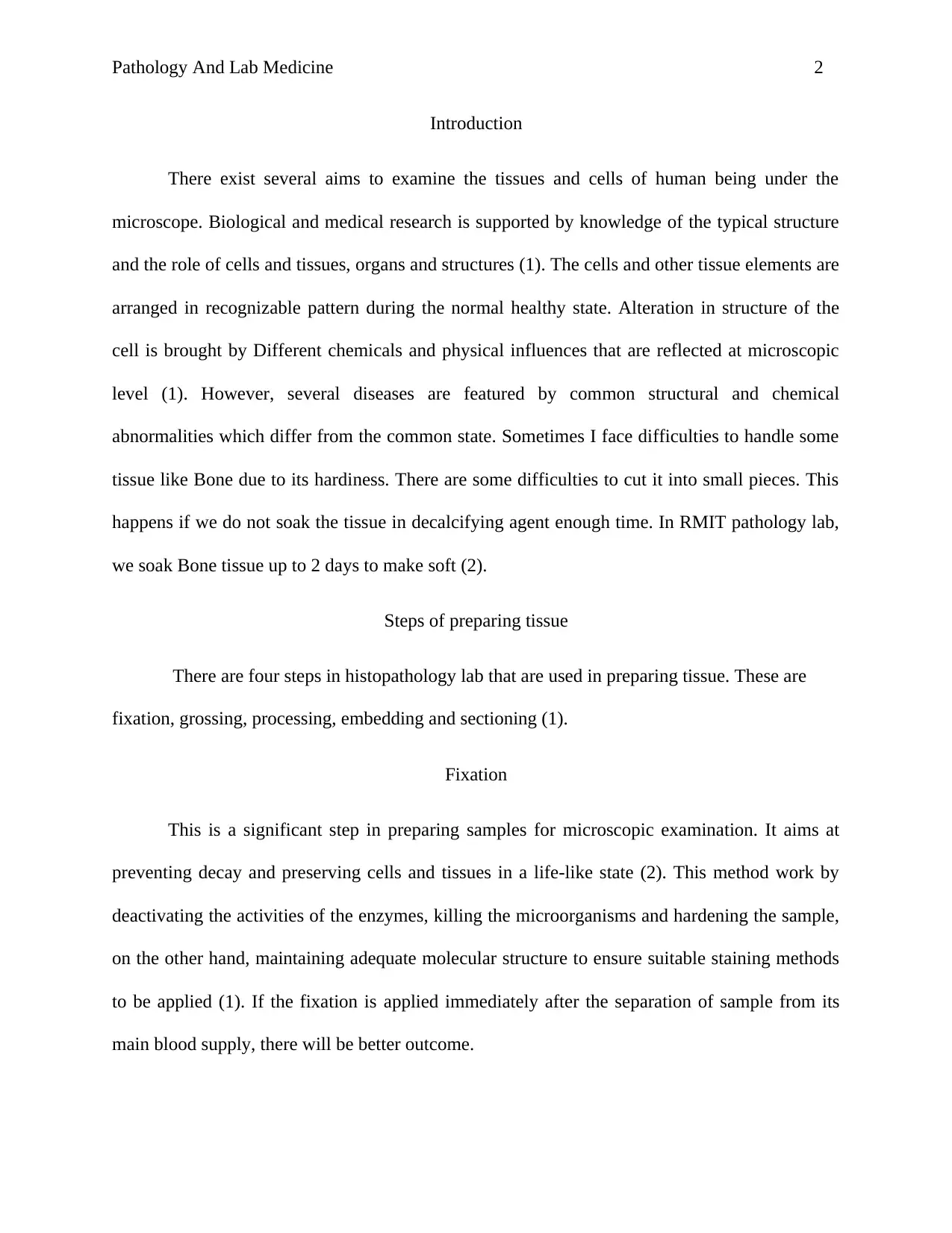
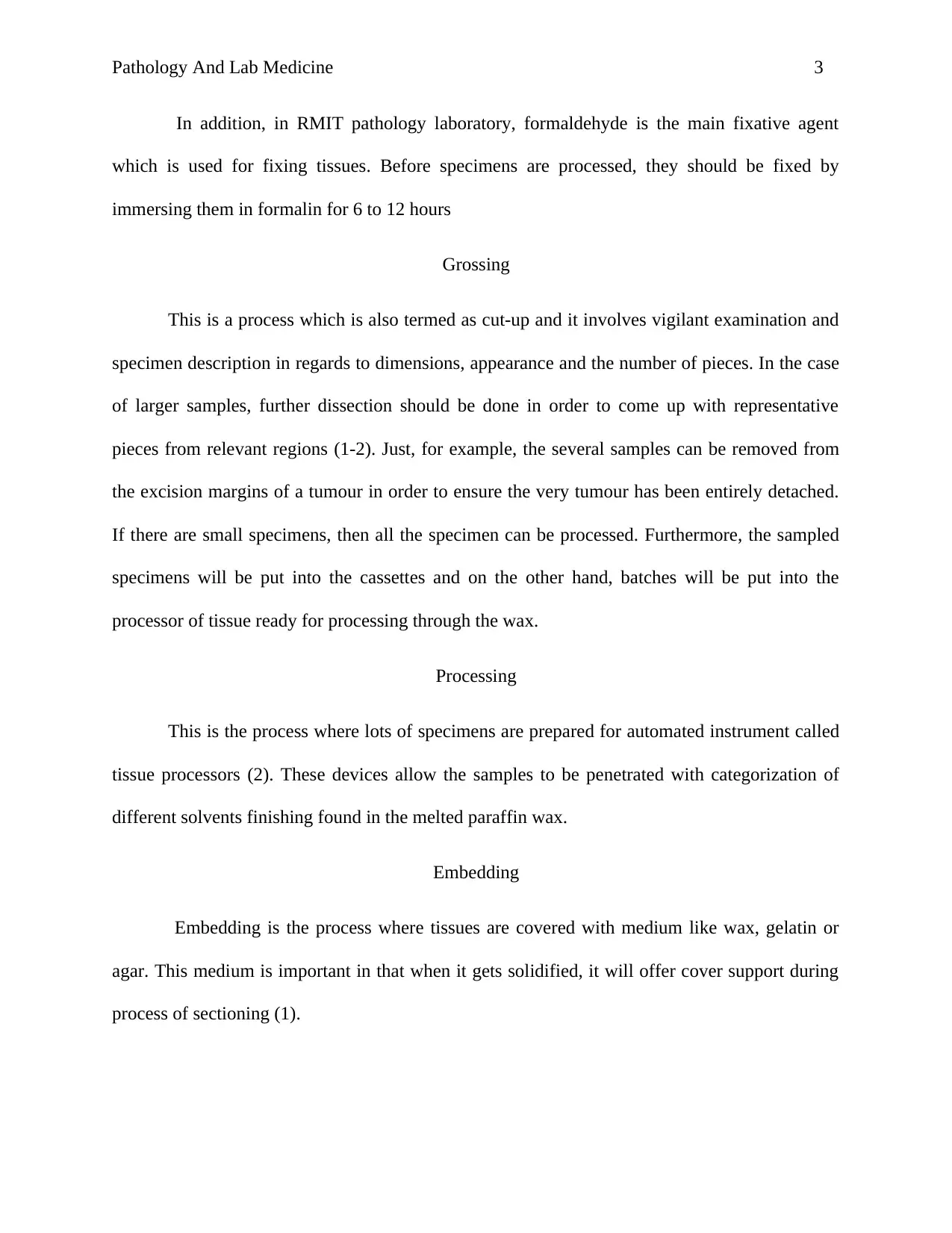

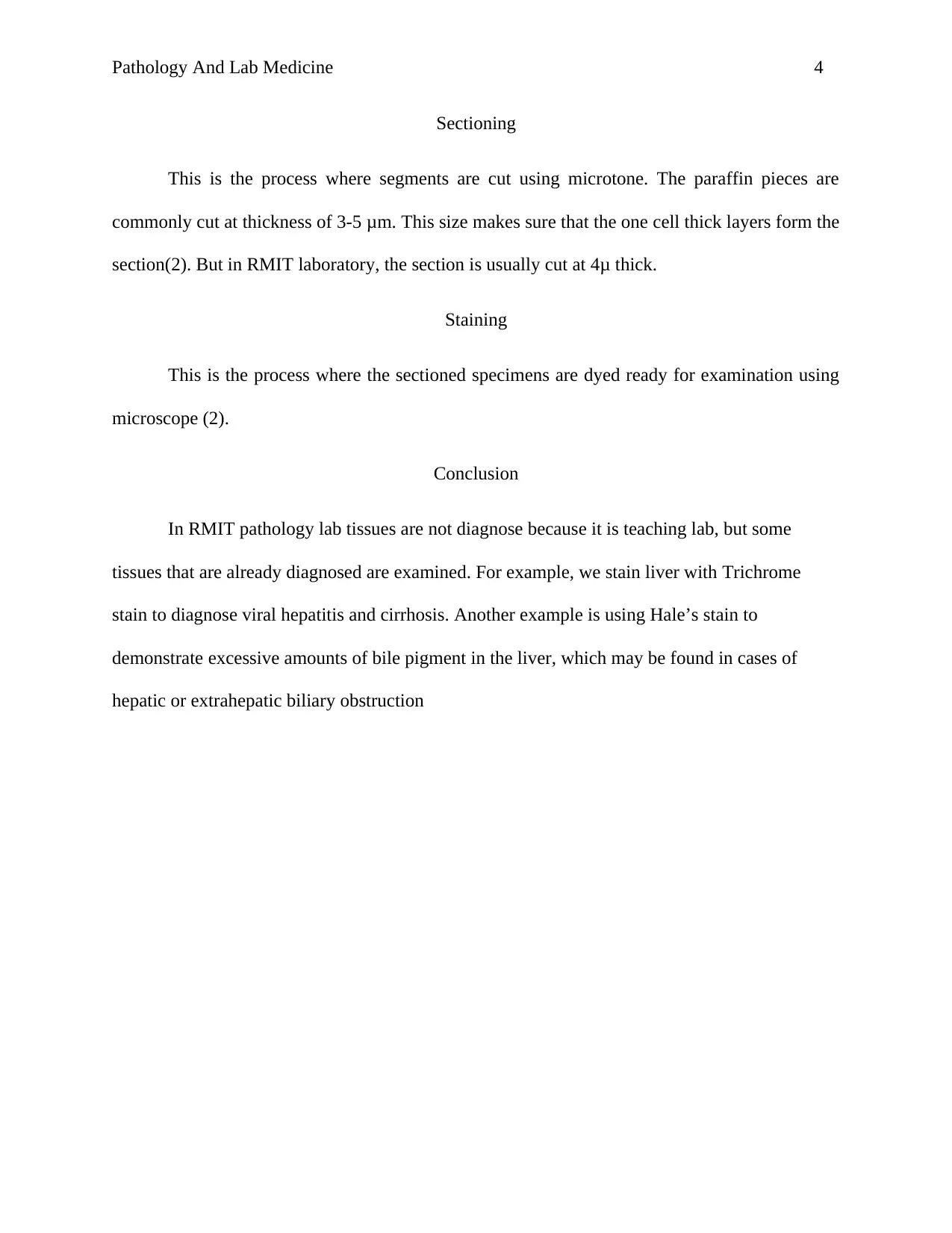
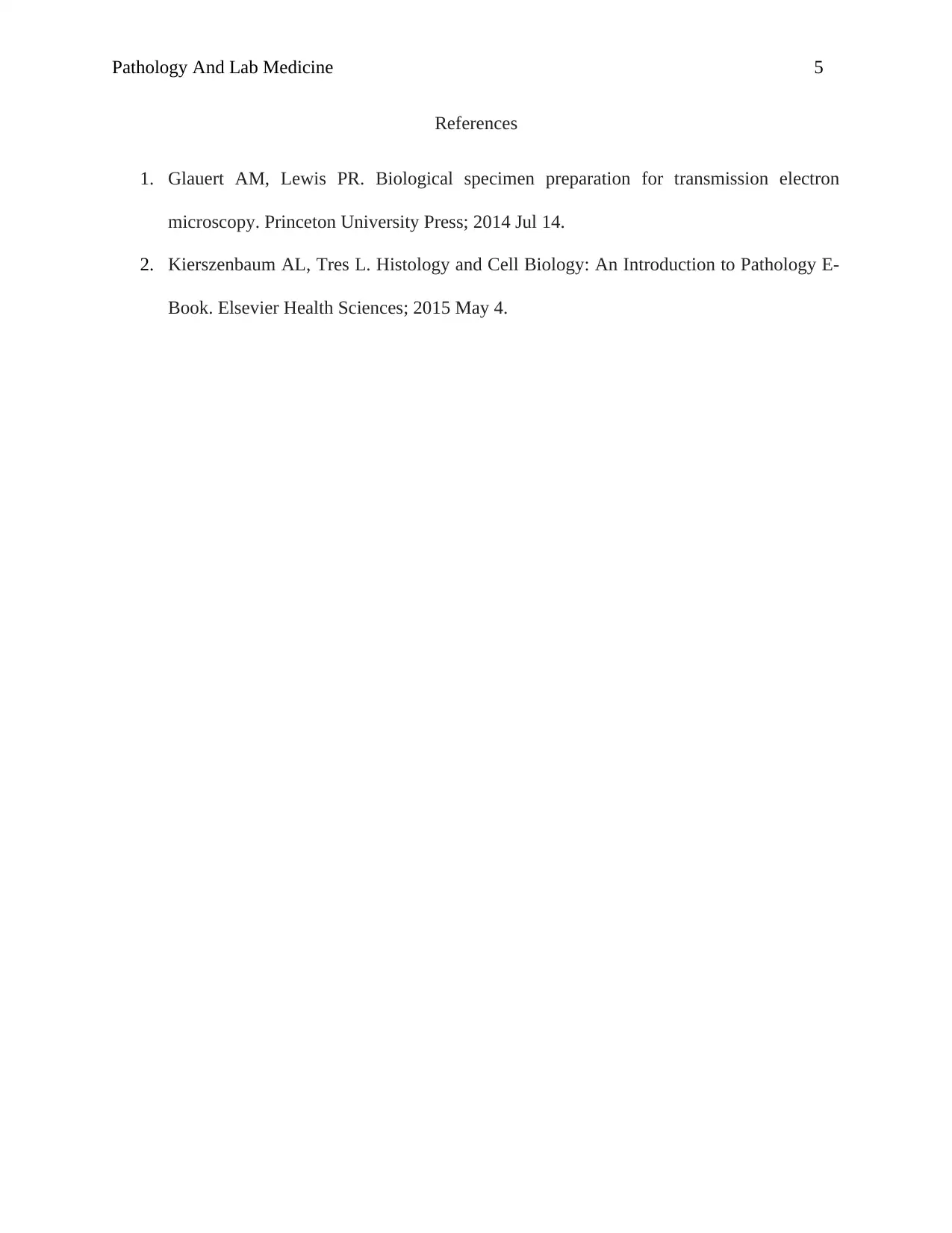



![[object Object]](/_next/static/media/star-bottom.7253800d.svg)